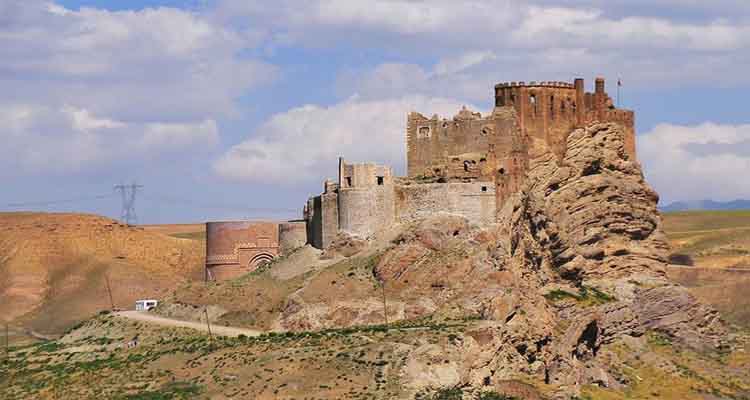Alamut
The enigmatic Alamut Castle (Hasan Sabbah Castle) is nestled among the mountains at the western edge of the Alborz mountain range, in a valley near Qazvín in the southern Caspian Sea. In the past, part of these mountains formed the Deylán district where it remains hostile. This area, located between the central plateau of Iran and the Caspian Sea, constitutes a formidable natural barrier. On the north side, the slopes are heavily forested and there are wild animals like wild boar, bear and even some species like the Caspian tiger, which is on the verge of extinction.
The history of Alamut Castle is closely linked to that of Hasan Sabbah (1034-1124) and therefore it will be useful to know about his ideology and religious doctrine as he was the leader of the Nasrid sect. The power of the Nasrids, also called hashshashín, whose fame is indebted to their strategy of targeted assassinations against political and military leaders, reached its peak during the Fatimid dynasty. Hasan Sabbah was born in Qom to a Shiite Twelfth family and received religious education from an early age.
At the age of seventeen, he converted to Ismailism, a sub-sect of Shiite Islam, which accepts Imam Ismail in place of his older brother Musa ibn Jafar as successor to the sixth Imam, that is, Jafar as Sádiq. This Ismaili missionary had vast knowledge of the Ismaili doctrine and on his travels he sought out new adherents to the Ismaili faith and attracted people for his piety. He behaved with people in the same way regardless of hierarchy and made his living through different vocations.
Hasan Sabbah as an Ismaili missionary and propagandist of this faith gained much fame especially in northwestern Iran. Nizam al-Mulk, with whom Hasan Sabbah befriended, ordered him to be pursued in order to prevent the proliferation of his revolutionary ideology, but he was assassinated by a follower of the faith. In 1090, he managed to take the Castle of Alamut as the seat of Ismailism. Despite the invasion of the Seljuk Turks and their small numbers, the Ismailis did not lose their independence in the castle in the mountains of Daylán for 166 years. Because they lived in hostile populations, Ismailis were often massacred in political killings, which were termed “holy crimes”. Due to the esoteric characteristic of these murders and the blind obedience to their leader, the Seljuks called them hashshashín (those who consume hashish), deriving into the word murderers. (assassins)
The library, destroyed in the attack by the Mongols, and astronomical facilities at Alamut were very famous. The castle has two parts: upper fort and lower fort. With the death of Hasan Sabbah in 1124, the Seljuks took control of the castle.
Alamut Valley
Some of the most mysterious tourist attractions in Iran are found in the Alamut and Shahrud valleys. The magnificent slopes of Alborz have spectacular inspirations that embody the beautiful landscapes of Switzerland, Patagonia, the central regions of Australia and the high plateaus of Syria. Gazing at these extravagant valleys is all the more appealing when you know that the natural beauty of this region has a mysterious and ancient scent.
If you are passionate about mountains, hiking, anthropology, historical landscapes and fascinating culture of the Middle East, SITO Travel will help you organize your trip to Iran. Get in touch with us because our experience is born and developed in the field.



Comments